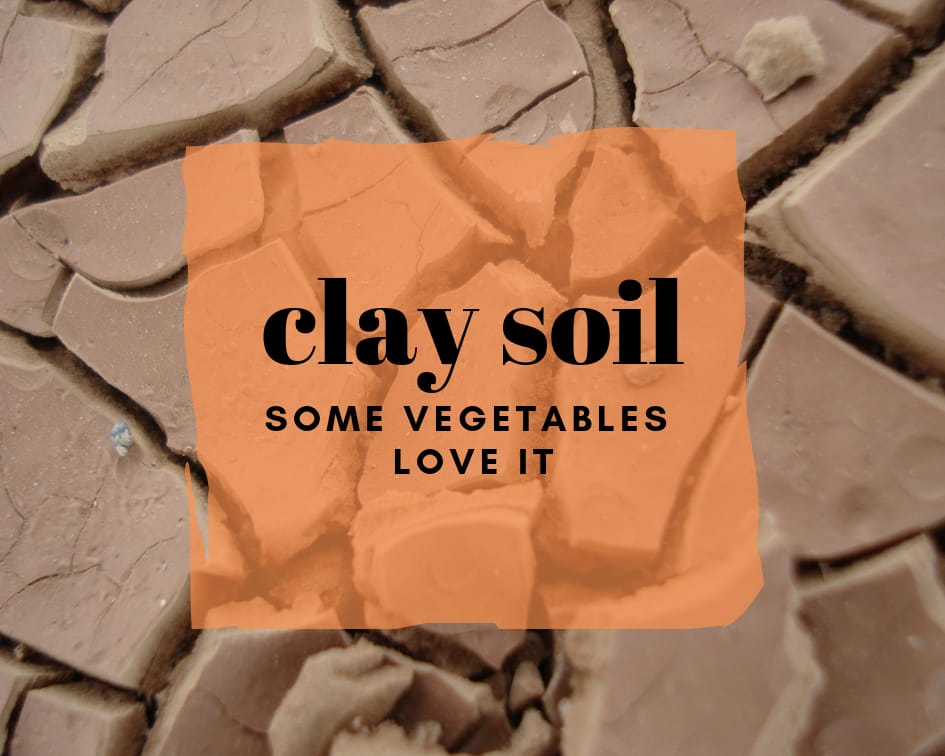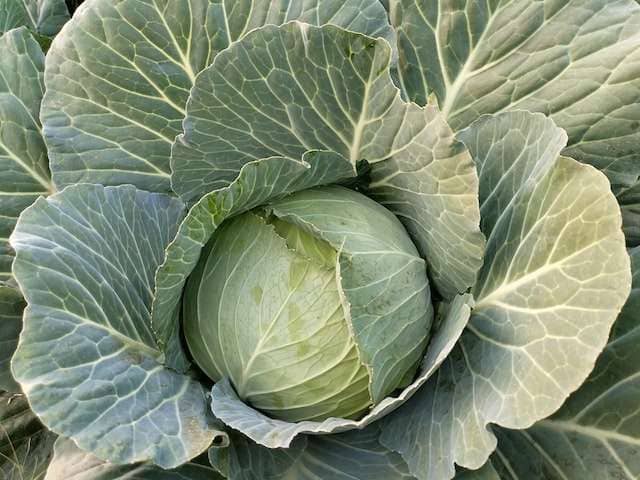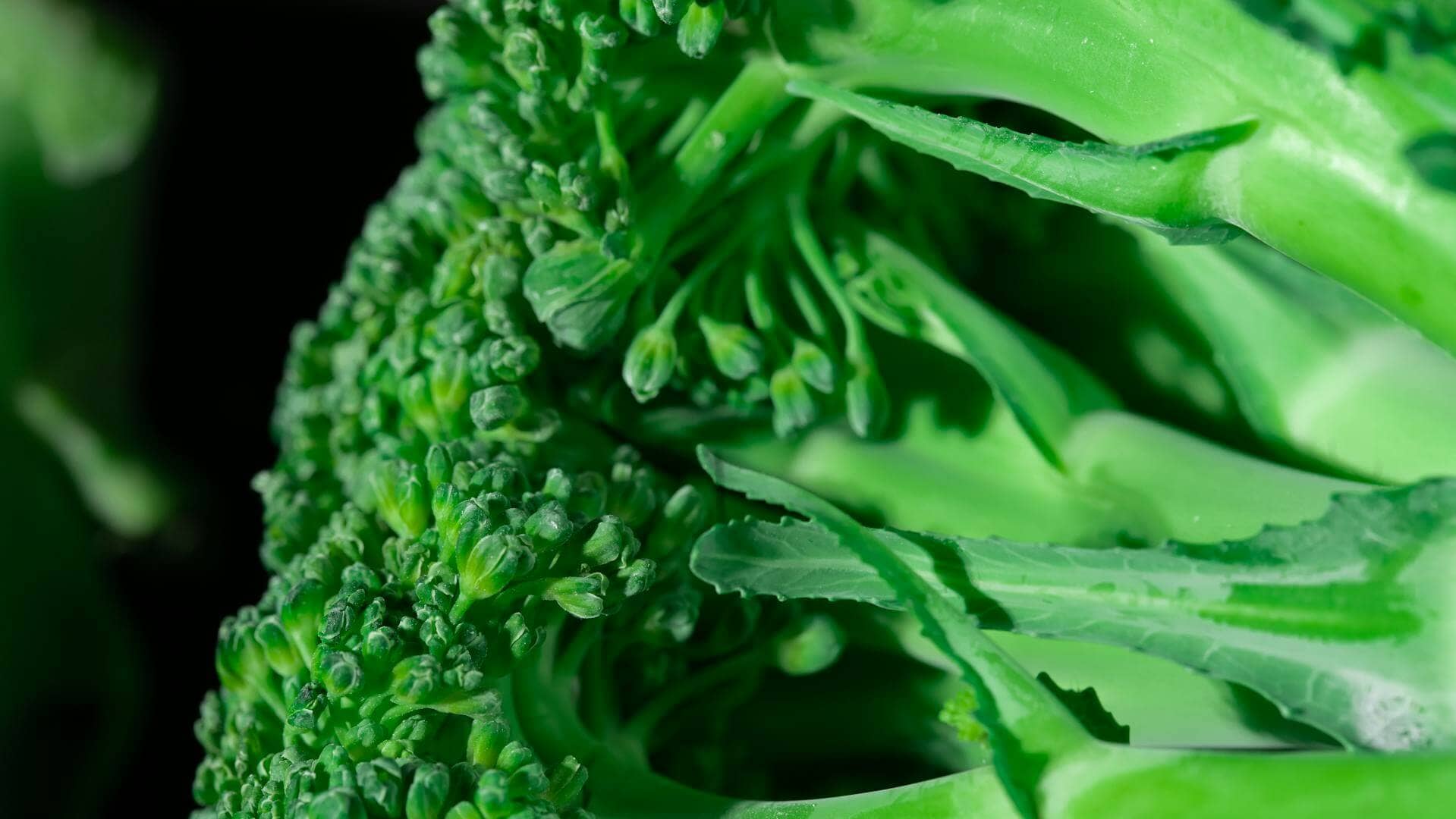This post may contain affiliate links. As an Amazon Associate we earn from qualifying purchases.
Clay soil isn’t quite as scary as lots of gardeners will have you believe. Sure, it’s a bear to work and amend, but some vegetables thrive in clay soil.
Nancy from Rohnert Park, California wants to know how to work with clay soil, not against it – especially in the vegetable garden.
While pure clay soil rules out Nancy’s ability to grow most of the root vegetables, such as carrots, there are others that will do just fine, thank you.
Although these vegetables will do fine in clay soil, it never hurts to add 3 to 4 inches of manure or compost to the soil. This not only provides nutrients, but helps separate the clay particles to allow more air into the soil.
So, Nancy, here you go: Clay soil vegetables.
Cabbage is an Amazing Clay Soil Vegetable
Sometimes I think cabbage will grow anywhere. Honestly, it’s that easy. It does best in a heavy loam soil, but will do fine in heavy clay. The heirloom varieties seem to do better so look for Brunswick, Charleston Wakefield or Danish Ballhead.
Set cabbage transplants out as early as possible in spring as they don’t tolerate summer heat. You can plant as early as five weeks before the last frost in your area.
Fall planting? Set those plants out at 6 to 8 weeks before the first frost.
Most cabbage growing instructions caution against both keeping the soil too dry or too moist and advise an inch to an inch and a half of water per week if it doesn’t rain.
Don’t run out and water just yet, as this information isn’t valid for cabbage grown in clay soil, which holds excessive moisture. You may not need to water at all during the season, but use a soil moisture meter to be sure.
Brussels Sprouts Just Might Be Tastier When Grown in Clay Soil
Brussels sprouts actually produce firmer heads in clay soil and thrive in cool weather. One requirement you shouldn’t skip over, however, is the soil pH. Brussels sprouts require as close to 6.5 as you can get. You’ll find a pH meter for sale here.
Then, you’ll need to fertilize during the season with at least 5 pounds of 5-10-10 fertilizer per 100 square feet.
These little cabbage relatives have a long growing season – those planted in spring won’t be ready to harvest until fall. Brussels Sprouts is another vegetable that requires consistently moist soil, especially during the summer. It’s sometimes hard to judge the moisture content of clay soil just by looking, so use that moisture meter to make sure the roots don’t dry out.
Check out the organic brussels sprouts seeds at High Mowing Organic Seeds.
 Broccoli is Definitely a Clay Soil Vegetable
Broccoli is Definitely a Clay Soil Vegetable
Are you starting to see a theme here? Most of the brassicas require a heavier soil and broccoli is no exception. The thing to remember with broccoli is that different varieties have various temperature requirements so check seed packets to make sure the variety you choose is suited to your region.
Broccoli can be grown as either a spring or a fall crop. Seeds started in spring require 6 to 8 weeks to mature and fall planted broccoli can be harvested within 4 to 5 weeks.
Most experts agree that broccoli requires lots of water during the season – some even suggest watering twice daily. Remember, that advice doesn’t pertain to broccoli grown in clay soil. Use your trusty water meter to check the moisture content of the soil.
Botanical Interests offers a variety of broccoli seeds.






